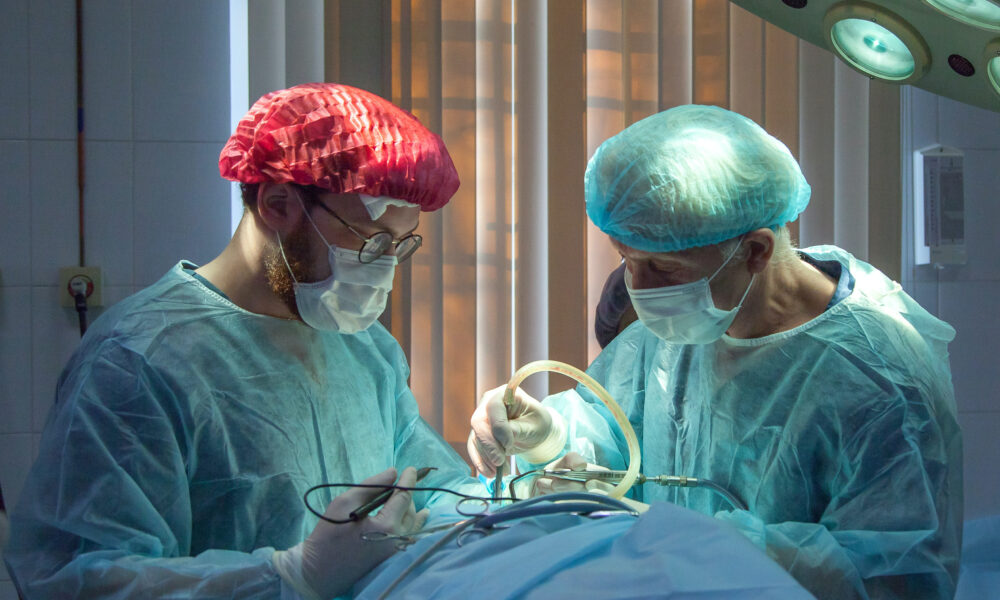Before performing procedures, surgeons must receive step-by-step training. The traditional method, “See One, Do One, Teach One,” asks trainees in surgical residency to repeat after their instructors. To gain experience, these trainees often practice their surgical skills on cadavers.
Due to the high cost of cadavers and limited availability of resources, researchers have directed their attention to virtual-reality-based surgical simulations. So far, they have developed different surgical simulator models that imitate various procedures.
However, realistically reproducing human tissues remains challenging. In soft tissues such as muscles and blood vessels, it is crucial to replicate their internal dynamics and physical properties, such as viscoelasticity—the tissues’ ability to remain viscous and elastic.
“In practice, [viscoelasticity] means that when you push or pull on tissue, the force it exerts in response is not only dependent on how far that tissue is pushed or pulled, but also, to an extent, how fast,” Harriet Violet Chorney, a master’s student in McGill’s Department of Mechanical Engineering, wrote in an email to The Tribune.
Although researchers have attempted to recreate viscoelasticity, inherent model uncertainties, resulting from imperfect data predictions, presented another problem. Chorney aims to strike the balance between accurate tissue representation and model uncertainty in spine surgery.
With professors James Forbes and Mark Driscoll from the same department, Chorney recently published a paper in Computers in Biology and Medicine that explores viscoelasticity in minimally invasive (MI) spine interbody-fusion surgery. During this operation, surgeons make small incisions through which they introduce microscopic cameras to access spinal nerves, vertebrae, and discs.
“[MI spine interbody-fusion surgery] is one of the largest surgeries that is associated with low back pain,” Chorney said in an interview with The Tribune. “When preventative measures no longer work, then surgery is what is implemented.”
Simulators can respond to different forces, such as pressure and vibration. This coordination provides valuable information known as ‘force feedback.’ Based on this feedback, simulators for the access-gaining step of MI spine surgery gain high realism, known as fidelity, to replicate as accurately as possible real-world conditions.
To develop a realistic force feedback model for this first step, Chorney built four mathematical models: Maxwell (MW), Kelvin-Boltzmann (KB), higher-order blackbox (HO), and inverted linear (IL). Because soft tissue behaves dynamically, simulation models must incorporate the dynamic frequency signals observed during the surgery, including those emitted by surgeons.
“It is important to design dynamic tests to inform the dynamic models,” Chorney explained in her email. “[B]ecause the surgeons may be pushing or pulling the tissue at different speeds, which can affect the corresponding force that is experienced, and we want the models we design to reflect that.”
MW and KB stand out in viscoelasticity, whereas HO shows the best error metrics—the lowest magnitude of errors compared to actual values. Conversely, IL represents soft tissues less accurately because it contains a static spring, and the applied force is in the opposite direction of other models.
Using these models, Chorney conducted an in-person study with 45 participants from the healthcare sector. In conditions with and without force feedback, participants would try to puncture a rubber tissue for a short time. Afterward, they answered two questions regarding the forces’ and the tissue’s realism.
“The purpose of my tests was to validate the numerical models that we actually built,” Chorney said. “Even though it was only a two or three minute test, it was to validate how many components you need to capture that accuracy, then the tradeoff with the uncertainty in the models itself.”
Overall, the researchers presented HO as the model with the highest similarity to soft tissues, as indicated by participants and mathematical data. This suggests that a model that better captures dynamic signals created in tissue may also be the most realistic, therefore making it the best to use for training.
“We were trying to develop not only the systems themselves being dynamic because tissue behaves dynamically […] but also a surgeon behaves dynamically, and in my paper, we capture both of those things.”






